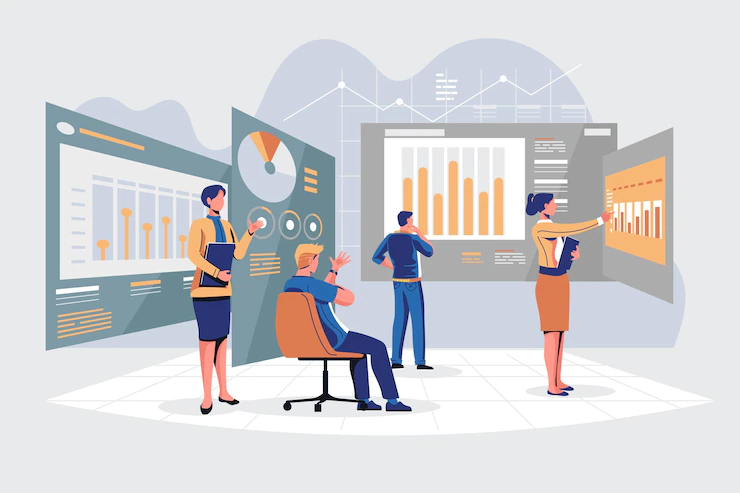In the fast-paced world of B2B SaaS, cold email outreach has become a vital strategy to connect with potential customers. However, sending out generic, untargeted emails often leads to disappointing results and a significant waste of resources. Businesses need to harness the power of data and analytics to stand out in the crowded inbox and achieve cold email success. By utilizing data-driven insights, companies can craft personalized, relevant, and impactful cold emails that resonate with their target audience, boost open and response rates, and drive business growth.
How Data And Analytics Can Optimize Cold Email Success
SaaS companies offering different services can utilize customer data to their benefit in several ways. Here are some of the ways they can do this.
Understanding Your Target Audience
Data and analytics play a pivotal role in understanding your target audience’s preferences, pain points, and needs. Analyzing demographic data, behavioral patterns, and past interactions allows you to create customer personas that offer invaluable insights into your prospects’ motivations and challenges. With this knowledge, you can tailor your cold emails to address specific pain points and provide solutions that truly matter to your recipients.
A B2B SaaS company offering project management software can analyze data to identify common pain points in project managers’ workflows. Armed with this information, they can craft cold emails emphasizing how their software streamlines project collaboration, saving time and increasing productivity.
Segmentation for Personalization
Segmentation based on data and analytics enables you to personalize cold emails effectively. Grouping recipients based on criteria like industry, company size, or geographic location allows you to craft targeted messages that resonate with each segment. Personalization not only captures the recipient’s attention but also shows that you understand their specific needs, building trust and credibility.
B2B SaaS companies providing marketing automation software can segment their cold email recipients into two groups: e-commerce businesses and software-as-a-service startups. Tailoring the email content to highlight how the software benefits each group individually can significantly improve engagement rates.
Optimizing Send Times
Data and analytics can reveal patterns regarding the best times to send cold emails. By identifying the times when your target audience is most active and receptive, you can schedule your email campaigns for maximum impact. Sending emails at the right time can increase the likelihood of them being opened and read, thus increasing the chances of a positive response.
Data analysis can indicate that C-suite executives tend to check emails early in the morning or late in the evening. Knowing this, a B2B SaaS company offering data analytics services can schedule their cold emails accordingly to increase the likelihood of the executives seeing and reading these emails.
A/B Testing Subject Lines and Content
Data-driven A/B testing is a powerful technique to optimize cold email performance. You can determine which variations generate the best response rates by experimenting with different subject lines, email structures, and calls-to-action. This iterative process enables continuous improvement, leading to more effective cold email campaigns over time.
Companies specializing in customer support software can A/B test two subject lines. One emphasizing improved customer satisfaction, and the other focusing on time-saving features. Data analysis will reveal which subject line resonates better with the target audience and drives higher open rates.
Also Read: Cold Email Outreach in a Post-GDPR World: Ensuring Compliance
Monitoring Email Engagement Metrics
Data and analytics provide valuable email engagement metrics, such as open rates, click-through rates, and response rates. Monitoring these metrics allows you to gauge the effectiveness of your cold email campaigns. If certain campaigns show low engagement, data analysis can help identify areas for improvement and guide necessary adjustments.
A B2B SaaS company offering cybersecurity solutions can track the click-through rates of their cold email links directing recipients to informative blog posts. If the rates are low, they can analyze the content’s relevance and make it more appealing to their audience.
Leveraging Customer Journey Data
The scope of data and analytics extend beyond the cold email itself. By analyzing the customer journey data, you can better understand prospects’ actions after receiving your email. This insight allows you to optimize follow-up sequences, providing relevant content and guiding prospects through the sales funnel.
Using customer journey data is crucial for companies offering a CRM platform. That’s because this can identify common drop-off points in the sales process. They can then send targeted email sequences to address specific concerns and nurture prospects toward conversion.
Improving Email Deliverability with Data
Email deliverability is crucial for cold email success. Analyzing data related to email deliverability, such as bounce rates and spam complaints, helps you maintain a clean and engaged email list. Keeping a high sender reputation ensures that your emails reach the recipients’ inboxes and have a better chance of being read.
A B2B SaaS company can regularly clean its email list by removing inactive subscribers and those who have repeatedly marked their emails as spam. This data-driven practice improves deliverability and maintains a positive sender reputation.
Conclusion
In the competitive landscape of B2B SaaS, cold email success depends on a data-driven approach. Businesses can gain valuable insights into their target audience by leveraging data and analytics. They can personalize cold emails, optimize send times, conduct effective A/B testing, monitor email engagement metrics, and improve email deliverability. This data-driven strategy leads to more impactful communication and higher response rates. Ultimately, business growth through meaningful connections with potential customers starts fructifying.
Follow Zohort for more updates.


